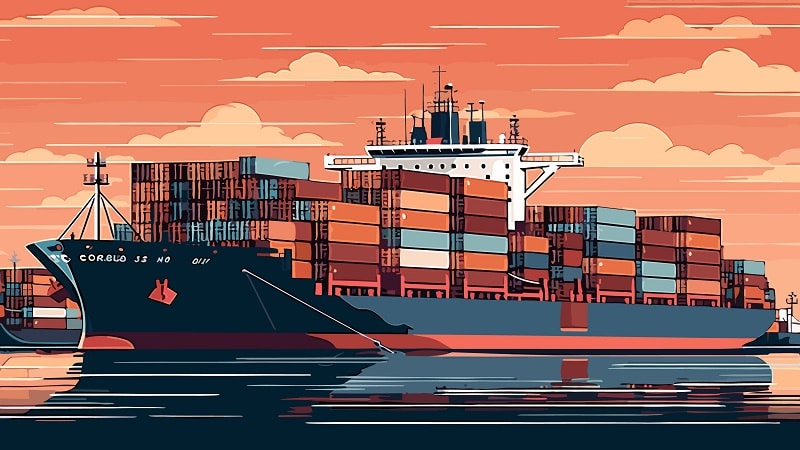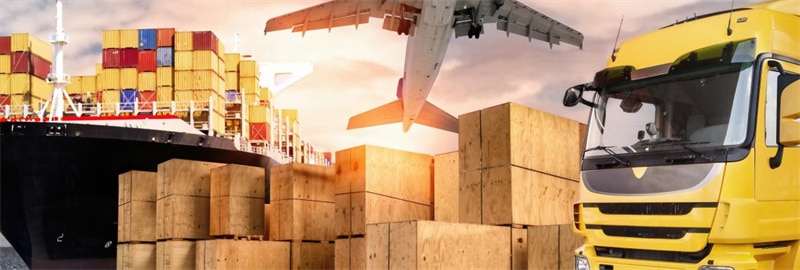
Cargo transportation is a critical component of the global economy, facilitating the movement of goods from manufacturers to consumers across vast distances. Whether it's the latest gadgets from Asia, fresh produce from South America, or automobiles from Europe, cargo transportation services are essential in ensuring that products reach their intended destinations efficiently and safely.
In this article, we will delve into the intricacies of cargo transportation, exploring various aspects such as cargo packaging and handling, transportation management systems (TMS), challenges faced in the industry, and the role of technology and innovation in shaping the future of cargo transportation.
I. Cargo Packaging and Handling

A. Importance of Proper Packaging
Proper packaging is the cornerstone of cargo transportation. It ensures the safety of goods during transit, reducing the risk of damage or spoilage. Cargo packaging must consider factors such as the type of goods being transported, their fragility, and the mode of transportation. For instance, delicate electronics require cushioning and shock-absorbent materials, while perishable goods need temperature-controlled packaging.
Furthermore, appropriate labeling and documentation are vital to avoid delays and ensure the correct handling of cargo. Compliance with customs regulations and international shipping standards is essential in international transport services. Inadequate packaging can lead to financial losses and damage a company's reputation, making it crucial for transportation cargo companies to invest in quality packaging materials and techniques.
B. Cargo Loading and Unloading Procedures
Efficient cargo loading and unloading procedures are crucial for minimizing delays and optimizing resources. Cargo transportation logistics must follow strict protocols to handle goods safely. Loading should consider weight distribution and stacking to prevent toppling or shifting during transit. Proper securing mechanisms, such as straps and braces, hold cargo in place.
Unloading is equally critical, as mishandling during this phase can damage goods. Here, the use of appropriate equipment like forklifts or cranes is essential. In the case of containerized cargo, specialized equipment, such as container handlers, is employed for swift and safe unloading.
C. Special Handling Considerations (e.g., Hazardous Materials)
Certain cargoes, such as hazardous materials, require special handling and adherence to strict regulations. Hazardous materials encompass many substances, including chemicals, gases, and flammable materials. Cargo transportation companies must be well-versed in classifying, labeling, and documenting hazardous cargo to comply with international safety standards, such as the UN Recommendations on the Transport of Dangerous Goods.
Specialized training for personnel handling hazardous cargo is essential to mitigate risks. Properly segregating and storing these materials are critical to prevent accidents and environmental hazards. Ensuring that cargo transportation companies are well-prepared to handle such goods is crucial for safety and regulatory compliance.
II. Transportation Management Systems (TMS)
A. Role of TMS in Cargo Transportation
Transportation Management Systems (TMS) have revolutionized the cargo transportation industry. TMS is a comprehensive software solution that optimizes various aspects of cargo logistics, including route planning, load optimization, and real-time tracking. It acts as the central nervous system of cargo transportation companies, streamlining operations and enhancing efficiency.
B. Benefits of TMS in Efficiency and Visibility
The adoption of TMS offers numerous benefits to cargo transportation company. First and foremost, it enhances efficiency by automating many manual processes. This reduces errors, lowers operational costs, and improves the overall speed of cargo movement. TMS also optimizes load planning, ensuring that trucks are fully utilized and reducing unnecessary fuel consumption.
Moreover, TMS enhances visibility into the supply chain visibility software. Real-time tracking and monitoring provide valuable insights, enabling logistics company to respond promptly to any disruptions or delays. This increased visibility also fosters transparency and accountability, as customers can track their shipments and receive accurate estimated arrival times.
III. Challenges in Cargo Transportation

A. Congestion and Traffic
One of the most significant challenges in cargo transportation is dealing with congestion and traffic. Important cities worldwide grapple with heavy traffic as urbanization grows, especially during peak hours. This congestion causes delays and increases fuel consumption and emissions, contributing to environmental concerns.
B. Weather and Natural Disasters
Cargo transportation is highly susceptible to weather and natural disasters. Adverse weather conditions, such as hurricanes, snowstorms, or heavy rainfall, can disrupt transportation networks, leading to delays and potential damage to goods. Natural disasters like earthquakes and floods pose even more significant risks.
To mitigate these challenges, transportation companies must have contingency plans. This includes monitoring weather forecasts and rerouting shipments when necessary. Additionally, securing cargo with proper packaging and handling methods is critical in anticipating rough weather conditions.
C. Security and Compliance
Maintaining the security of cargo is paramount in the transportation industry. Cargo theft is a significant concern, and cargo transportation companies must implement robust security measures to protect their shipments. This includes using tamper-evident seals, employing GPS tracking systems, and conducting thorough background checks on personnel handling sensitive cargo.
Compliance with international regulations is another challenge. Different countries have varying customs, safety, and environmental regulations, making it essential for cargo transportation companies to stay updated and adhere to these rules. Failure to comply can result in delays, fines, or cargo seizure.
D. Environmental Sustainability
Environmental sustainability has become a central concern in cargo transportation in recent years. The industry significantly contributes to greenhouse gas emissions, primarily due to the reliance on fossil fuels. Cargo transportation companies are under increasing pressure to reduce their carbon footprint and adopt eco-friendly practices.
IV. Technology and Innovation
A. GPS Tracking and Real-time Monitoring
Technology is playing a transformative role in the cargo transportation industry. GPS tracking and real-time monitoring systems have become indispensable tools for cargo transportation companies. These systems provide continuous updates on the location and status of shipments, allowing companies to track their cargo's progress accurately.
GPS tracking enhances security by deterring theft and facilitating the recovery of stolen goods. It also enables proactive decision-making, as real-time data can be used to reroute shipments in response to unexpected delays or disruptions. Customers also benefit from this technology, as they can monitor their shipments in real-time, enhancing transparency and trust.
B. Automation and Robotics
Automation and robotics are reshaping cargo handling and logistics freight. Automated warehouses, equipped with robots, can efficiently manage inventory and fulfill orders with minimal human intervention. In the transportation process, autonomous vehicles are being tested for their potential to reduce labor costs and improve safety.
C. Sustainable Transportation Solutions
The quest for sustainability has led to the development of various eco-friendly transportation solutions. Electric and hybrid vehicles are increasingly used for cargo transportation, offering lower emissions and reduced fuel consumption. Additionally, companies are investing in aerodynamic enhancements and lightweight materials to improve the fuel efficiency of their fleets.
Furthermore, the concept of “green logistics” is gaining traction. This involves optimizing transportation routes to minimize environmental impact, using renewable energy sources for facilities, and implementing waste reduction measures. Sustainable practices benefit the environment and align with consumer preferences for eco-conscious products and freight transportation services.










